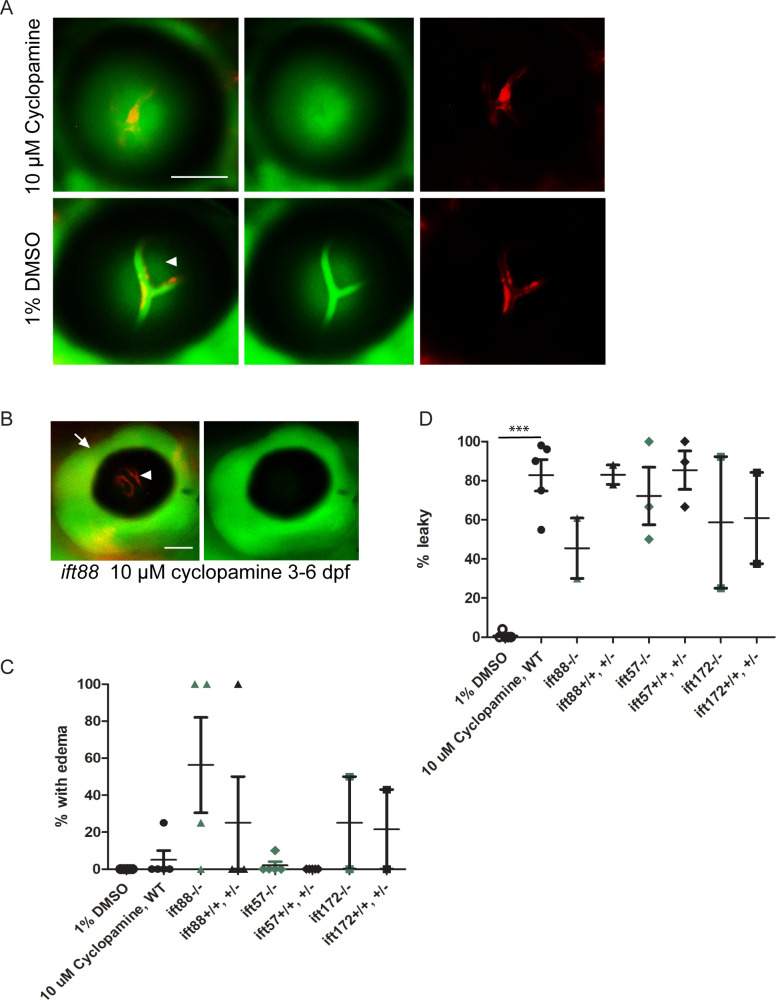Fig 5
Zebrafish larvae were treated with 10 μM cyclopamine from 5 dpf– 7 dpf. (A) Cyclopamine-treated larvae had BRB breakdown at 7 dpf, as seen by the detection of DBP-EGFP (green) outside of the hyaloid vessels (red). Arrowhead indicates autofluorecence. (B) Fluorescent micrograph of a cyclopamine-treated zebrafish at 7 dpf with edema around the eye (arrow), and non-perfusion of the hyaloid vasculature (arrowhead). (C) Graph depicting the percentage of WT and Ift mutant fish in each clutch with edema/non-perfusion after treatment with 10 μM cyclopamine from 5 dpf– 7 dpf (differences between mutants and their non-mutant siblings not significant by Student’s t-test). (D) Graph depicting the percentage of WT and Ift mutant fish in clutches without edema/non-perfusion that had BRB breakdown upon treatment with 10 μM cyclopamine or 1% DMSO vehicle control (***p < 0.0005, all other differences not significant by Student’s t-test). Each data point in (C) and (D) represents a clutch of >50 larvae. Error bars represent SEM. Scale bars = 50 μm.

